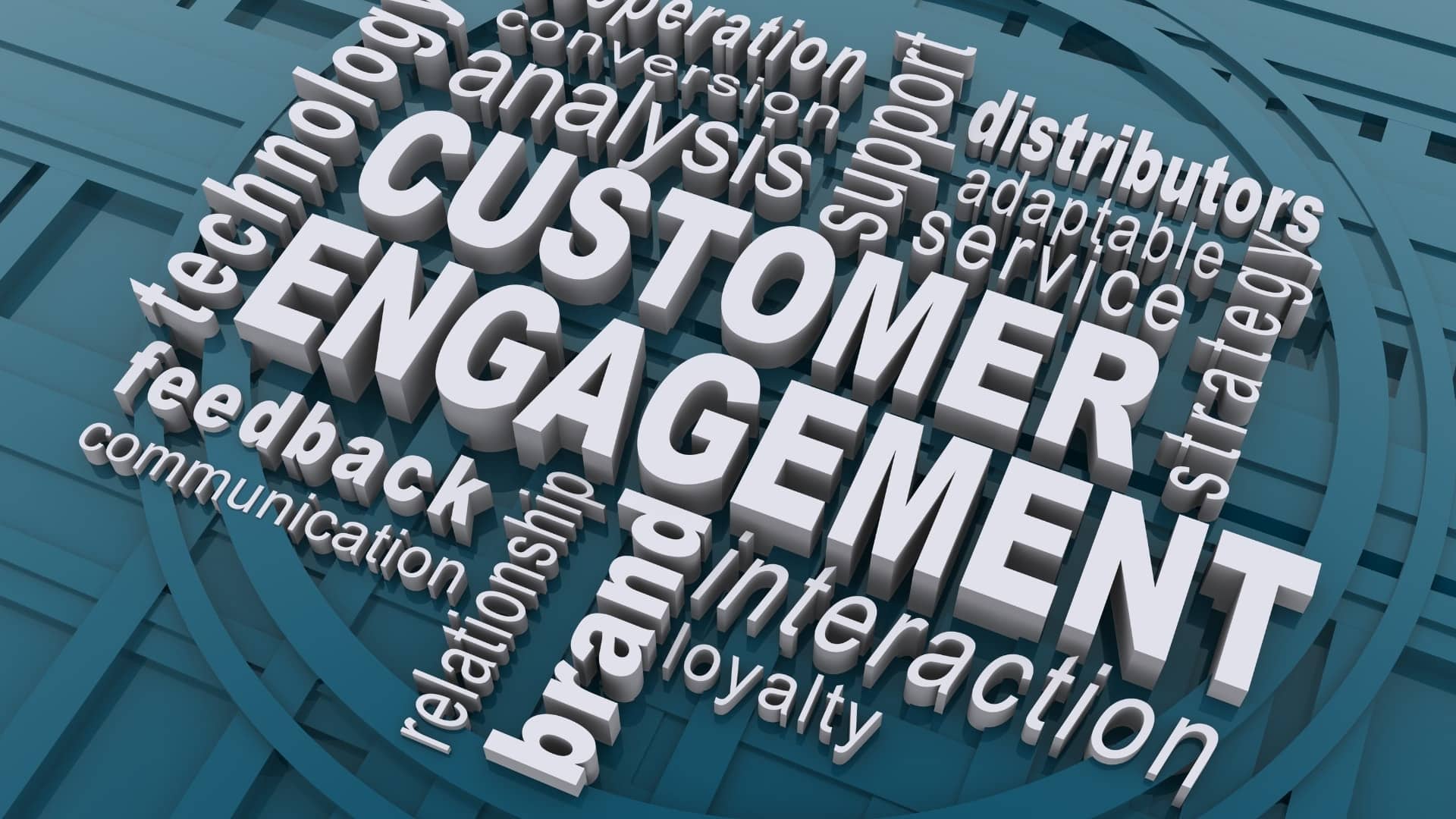What Is Customer Engagement Marketing?

In today’s competitive, digital-first landscape, customers expect more than just ads—they want meaningful interactions with brands. Customer engagement marketing focuses on building relationships, driving two-way conversations, and fostering brand loyalty through personalized and relevant interactions. A customer engagement marketing strategy emphasizes creating interactive experiences and personal connections with customers, utilizing techniques such as hosting virtual events, fostering community groups, and omnichannel engagement.
It’s not just about selling products—it’s about connecting with customers at every touchpoint, making them feel heard, valued, and invested in your brand.
So, how do brands engage customers effectively? How can digital asset management (DAM) enhance these efforts?
Let’s dive into real-world examples, key strategies, and how ASMBL empowers brands to drive customer engagement.
Why Customer Engagement Marketing Matters
Businesses that prioritize customer engagement outperform competitors by:
- Building brand loyalty. Engaged customers are more likely to become repeat buyers.
- Increasing revenue. Companies with strong engagement strategies see higher conversion rates.
- Enhancing brand perception. Customers trust brands that offer consistent and personalized experiences.
Problem: Many Brands Struggle With:
- One-sided marketing. Pushing promotions instead of engaging in meaningful conversations.
- Inconsistent branding. Mixed messaging across social media, email, and ad campaigns.
- Scattered assets. Marketing teams lack access to the right visuals, videos, and brand materials.
Solution: A Customer Engagement Strategy Powered by a DAM System Ensures Consistency, Personalization, and Streamlined Content Creation.
Understanding Customer Engagement Marketing
Definition and Importance of Customer Engagement
Customer engagement marketing is a strategic approach focused on building and maintaining strong relationships with customers throughout their entire lifecycle. This strategy goes beyond mere transactions, aiming to create a personalized experience that fosters loyalty, satisfaction, and advocacy. By engaging customers at every touchpoint, businesses can make customers feel valued and understood, which is crucial for retaining customers and increasing their lifetime value. Engagement marketing is not just a tactic; it’s a comprehensive approach that ensures customers remain connected and invested in your brand.

Benefits of Customer Engagement for Business Success
Effective customer engagement marketing strategies can bring numerous benefits to businesses, including:
- Increased Customer Loyalty and Retention: Engaged customers are more likely to become loyal customers who repeatedly choose your brand over competitors.
- Improved Customer Satisfaction and Experience: Personalized interactions make customers feel valued, leading to higher satisfaction levels.
- Enhanced Brand Reputation and Advocacy: Satisfied customers are more likely to advocate for your brand, enhancing your reputation.
- Increased Customer Lifetime Value: Engaged customers tend to spend more over their lifetime, boosting your revenue.
- Improved Customer Insights and Feedback: Regular engagement provides valuable data and feedback, helping you understand customer needs better.
- Competitive Advantage in the Market: A strong customer engagement strategy sets you apart from competitors, making your brand more attractive to potential customers.
Real-World Examples of Customer Engagement Marketing
Personalization: Netflix’s Recommendation Engine
Netflix’s customer engagement strategy revolves around hyper-personalization.
- How they do it:- AI-driven recommendations based on watch history and preferences.
- Personalized emails and push notifications with content suggestions.
- A seamless multi-device viewing experience.
Loyalty programs play a crucial role in enhancing customer relationships and engagement. By offering rewards and personalized experiences, brands can foster deeper connections with their customer base, encouraging long-term loyalty and advocacy.
Lesson: Data-Driven Personalization Keeps Customers Engaged by Delivering Relevant Content When They Need It.
Community-Driven Engagement: Nike’s Fitness Apps
Nike builds strong engagement by creating communities around fitness and motivation.
- How they do it:- Nike Run Club and Training Club apps gamify workouts and connect users globally.
- Exclusive content, training plans, and expert tips for users.
- Social media campaigns that feature real athletes and user-generated content.
- An online community fosters customer engagement by allowing users to share their progress and motivate each other.
Lesson: Brands That Foster Community Engagement Create Lasting Connections With Their Audience.
Interactive Engagement: Spotify Wrapped
Spotify turns customer data into engaging, shareable experiences with its Spotify Wrapped campaign.
- How they do it:- Provides personalized year-in-review reports for users.
- Encourages social media sharing, driving brand awareness.
- Uses AI to create customized playlists based on listening habits.
- Maintaining relationships post-purchase is crucial, and Spotify achieves this by continuously engaging users with personalized content and experiences.
Lesson: Interactive, Data-Driven Experiences Encourage Customers to Engage and Advocate for a Brand.
How Digital Asset Management (DAM) Fuels Customer Engagement
Customer engagement relies on high-quality, consistent content—but without a centralized system, marketing teams struggle with:
Content Chaos:
- Searching for scattered brand assets across multiple folders.
- Using outdated visuals in customer-facing campaigns.
- Losing time recreating assets instead of repurposing existing content.
- Gathering first-party data through customer engagement tools like surveys and live polls to gain valuable insights into consumer motivations and needs.
How ASMBL’s DAM System Helps:
- Centralizing all brand assets in one accessible location.
- Ensuring only the latest, approved visuals are used in campaigns.
- Streamlining the process of repurposing existing content.
- Leveraging customer feedback to continuously improve content management and enhance customer satisfaction.
How ASMBL’s DAM System Helps:
- Centralized asset library. Ensures all teams access approved, on-brand content.
- AI-powered search & tagging. Quickly find images, videos, and templates.
- Version control & approvals. Prevent inconsistent branding across channels.
- Automated workflows. Speed up content creation and campaign launches.
- Customer engagement platform. Integrates activities across various channels to create a seamless customer experience.
Lesson: A DAM System Like ASMBL Ensures That Every Customer Touchpoint Is Visually Consistent, Brand-Aligned, and Engaging.
Key Strategies to Improve Customer Engagement Marketing Strategy
Create Personalized Experiences
- Use customer data and AI to deliver tailored content and product recommendations.
- Ensure that all marketing visuals align with each customer’s journey.
- Utilize the net promoter score as a key metric for measuring customer loyalty and identifying areas for improvement.
Maintain Brand Consistency Across All Platforms
- Ensure logos, colors, messaging, and visuals remain uniform across social media, email, and advertising.
- Implement a DAM system to centralize brand assets and streamline content distribution.
Enable Seamless Multi-Channel Engagement
- Connect with customers on the channels they use most—social media, email, mobile apps.
- Use marketing automation to schedule content and track engagement metrics.
- Emphasize the importance of email marketing and social media platforms to foster continuous interaction and build customer loyalty.
Encourage Two-Way Interaction
- Leverage social media engagement, polls, and interactive campaigns.
- Respond to customer comments, feedback, and questions in real-time.
- Develop a comprehensive customer engagement plan to enhance relationships and drive long-term loyalty.
Invest in the Right Technology
- Implement a DAM system like ASMBL to manage digital assets efficiently.
- Use AI-powered analytics to track and optimize engagement strategies.
- Highlight the role of dynamic content and content marketing in providing real value and retaining customers.
Customer-Centric Approach to Engagement
A customer-centric approach is essential for successful customer engagement marketing. This involves understanding customer needs, preferences, and behaviors to create a personalized experience that meets their expectations. Businesses can achieve this by:
- Conducting Customer Research and Analysis: Gather and analyze data to understand what your customers want and need.
- Creating Buyer Personas and Customer Journey Maps: Develop detailed profiles and maps to visualize and plan the customer experience.
- Developing Targeted Content and Messaging: Craft content that speaks directly to your customers’ interests and pain points.
- Using Data and Analytics to Inform Engagement Strategies: Leverage data to continuously refine and improve your engagement tactics.
Personalization in Customer Engagement
Personalization is a key aspect of customer engagement marketing. It involves tailoring the customer experience to individual preferences and needs. Businesses can achieve personalization through:
- Using Customer Data and Analytics to Inform Engagement Strategies: Analyze customer data to understand their behaviors and preferences.
- Creating Targeted Content and Messaging: Develop content that resonates with individual customers based on their interests and past interactions.
- Offering Personalized Recommendations and Offers: Use insights to provide relevant product recommendations and exclusive promotions.
- Using AI and Machine Learning to Automate Personalization: Implement AI-driven tools to deliver personalized experiences at scale.
By understanding customer engagement marketing and its importance, businesses can develop effective strategies to build strong relationships with their customers, drive loyalty and retention, and ultimately achieve long-term success.

Why ASMBL Is the Best DAM for Customer Engagement Marketing
If your brand is struggling with content inconsistencies, scattered assets, or inefficient workflows, ASMBL provides the ultimate DAM solution to power engagement marketing.
What Sets ASMBL Apart?
- AI-driven search & tagging.
- Version control & approvals.
- Secure access controls.
- Seamless integrations.
- Automated workflows.
ASMBL’s DAM system acts as a customer engagement platform that ensures a seamless customer experience by integrating activities throughout the customer lifecycle across various channels.
With ASMBL’s DAM, businesses can create engaging, on-brand content faster—improving customer interactions and driving loyalty.
The Future of Customer Engagement: Why Brands Must Act Now
Customer engagement is not just about sending emails or posting on social media—it’s about creating meaningful, brand-aligned experiences at every touchpoint. Virtual events play a crucial role in customer engagement marketing by providing interactive experiences and valuable insights to attendees.
- Brands that fail to prioritize engagement risk losing customers to competitors who offer seamless, personalized interactions.
- If your brand is struggling with inconsistent content, outdated assets, or inefficient marketing workflows, it’s time to upgrade your customer engagement marketing strategy to increase engagement.
- Discover how ASMBL’s DAM helps businesses streamline content creation and maximize customer engagement.


